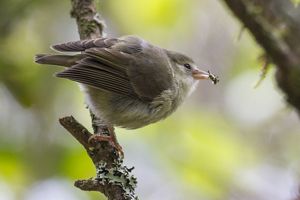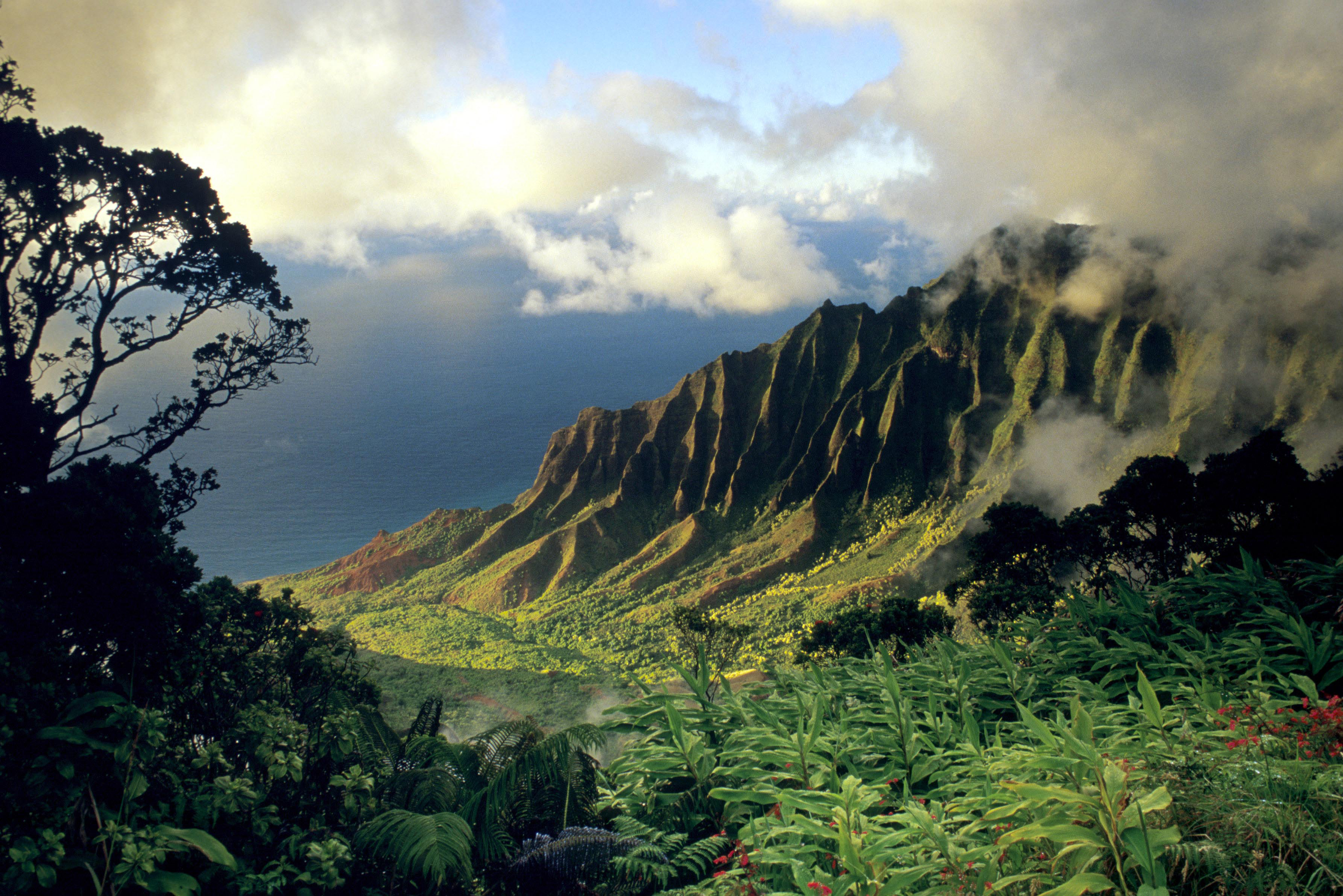
The Race to Save Native Forest Birds in Hawai'i
Federal funding is supporting efforts to reduce populations of mosquitoes that carry avian malaria
The Nature Conservancy’s Waikamoi Preserve, located in the highest elevations of Maui, protects one of the best surviving examples of native forest in the entire Hawaiian archipelago. Native forest birds, some endangered throughout their range, thrive at Waikamoi, even as they struggle on other islands.
Lucas Behnke, director of the Kaua‘i terrestrial program for TNC's Hawai‘i and Palmyra chapter, recently visited the preserve, which serves as a stark contrast to Kaua‘i, where mosquitoes are found at every elevation and are driving native forest birds to extinction. Waikamoi is an example of the past diversity of native forest in Hawai‘i, Behnke said, and could be a hopeful vision of the future.
“In Waikaimoi, I saw and heard a forest that was full of birds, and it made me really happy, and hopeful, because bringing these birds back from the brink is an achievable goal,” says Behnke, a self-described “bird nerd” from northern California, whose career has included support for the recovery of the red-cockaded woodpecker in the southeastern U.S. and searching for the ivory-billed woodpecker in Arkansas.

Dive Deeper
Explore our work protecting Hawai'i’s and Palmyra’s spectacular diversity of life.
Learn MoreBehnke first came to Kaua‘i two decades ago only to find that “many of the birds I’d hoped to rediscover had just been declared extinct.” The situation has continued to worsen, but a partnership dedicated to reversing the tragic decline of Hawai‘i’s forest birds is pitting mosquitoes against mosquitoes in hopes of slowing the spread of deadly avian malaria, which kills birds with just one bite. That effort recently received a significant boost from the Inflation Reduction Act.
The situation on Kaua‘i is indeed dire, says Chris Farmer, Hawai‘i program director for the American Bird Conservancy (ABC), one of TNC’s partners in this work. He said the island chain has lost about 67% of its birds since humans arrived.
“The extinction threat in Hawai‘i is orders of magnitude more severe than for imperiled mainland birds,” Farmer explains. “This is especially true for Hawaiian honeycreepers, where avian malaria and introduced mosquitoes pose an existential threat to at least 15 species across the islands.”


Quote: Mele Khalsa
“Many of these birds are pollinators and seed dispersers and provide insect control. When these birds go extinct, we’re facing large-scale ecosystem collapse of our forests.”
Mele Khalsa, the natural resources manager for the Kaua‘i terrestrial program for TNC’s Hawai‘i and Palmyra chapter, says the impact of the multiple extinctions will reverberate through the high-elevation forests of the mountainous islands. “Many of these birds are pollinators and seed dispersers and provide insect control. When these birds go extinct, we’re facing large-scale ecosystem collapse of our forests.”
The birds also are important to native Hawaiians, who view them as members of their extended families and in the past used their plumage for intricate featherwork raiment, which were used to signify royalty and in ceremonies.
As is often the case, the causes of these extinctions are complex, says Khalsa. It begins with the arrival of non-native species, going all the way back to initial settlement of the islands by Polynesians, who brought rats, pigs and dogs. There have been many more animal, plant and pest introductions since then. Non-native animals prey on native birds and destroy the forest understory, providing an opportunity for invasive weeds like Himalayan ginger and strawberry guava to smother native plants, which evolved in relationship with the birds. Development and large-scale agriculture also led to extensive habitat loss across Hawai‘i.

Today, however, the greatest threat comes from the southern house mosquito, which is believed to have first come to Hawai‘i on 19th century whaling ships. These insects threaten humans because they’re host to West Nile Virus, but they also carry avian malaria, a disease to which Hawaiian forest birds have no natural immunity.
The only defense against the mosquito had been the islands’ topography, because the mosquitoes could not survive in the colder, high-elevation reaches of the remaining native forests.
Conservation groups and land managers in Hawai‘i, including The Nature Conservancy, have deployed a range of methods to bring the birds back from the brink, including habitat restoration, predator reduction and captive breeding.
But even as the forests have begun to recover, climate change has raised the average temperatures across the islands, allowing the mosquitoes to spread to ever higher elevations, bringing avian malaria with them. Today, mosquitoes are found above 5,000-feet elevation across Hawai‘i, which comprises the entire island of Kaua‘i and many native forest preserves on other islands.

One critically endangered bird is the ‘akikiki, a small, gray, insect-eating bird that once likely nested everywhere on Kaua‘i but has retreated to high-elevation slopes, which are no longer mosquito-free due to warming temperatures. “When you come across them, you can’t help but stand there and stare at them and wonder about their lives,” Behnke says. “They spend a little time where you can see them, and then they are gone.”
Sadly, it’s possible that the ‘akikiki will go extinct in the wild, as fewer than 10 remain.
But even if the ‘akikiki is lost, hope for other native forest birds may come from a new technique that has been developed to fight mosquito-borne diseases fatal to humans: give male mosquitoes—which do not bite—a different, incompatible strain of Wolbachia, a common and naturally occurring bacteria that can interfere with mosquito reproduction. The Birds Not Mosquitoes partnership is conducting pilot studies and in late 2023 began small-scale releases of male mosquitoes in bird habitat on Maui and Kaua‘i.

This work could not happen without federal partnerships.
Many members of the Birds Not Mosquitoes partnership strongly advocated for funding to support the U.S. Department of Interior (DOI) Strategy to Prevent the Extinction of Hawaiian Forest Birds through the Infrastructure Investment and Jobs Act (IIJA), Inflation Reduction Act and Congressionally directed appropriations. Consequently, DOI has invested more than $14 million of IIJA funding to support this work. TNC has received more than $8 million to launch and support mosquito-control efforts on Maui and Kaua‘i and give Hawai‘i’s forest birds a fighting chance at survival.
On Kaua‘i, Behnke says, forest restoration and predator-control efforts are starting to show signs of success, “and if we can dial back the mosquito abundance, we have a chance to see this forest again—and hear it.”
Tell Congress to Protect Conservation Funding
Government action on conservation is at an all-time high. We need to keep that going.
Pledge Your Support


